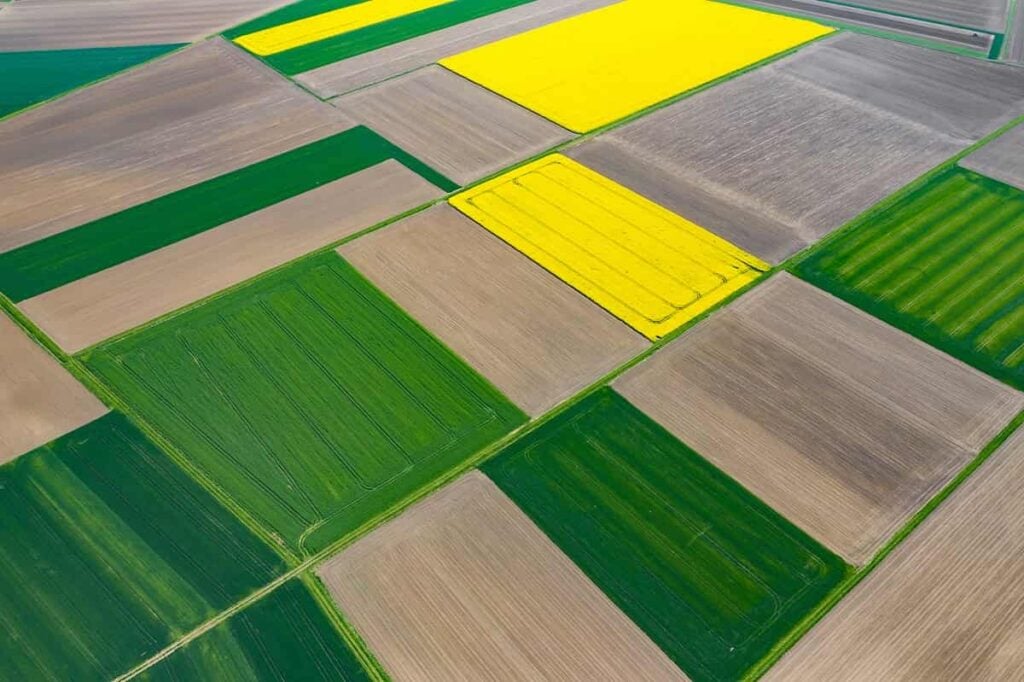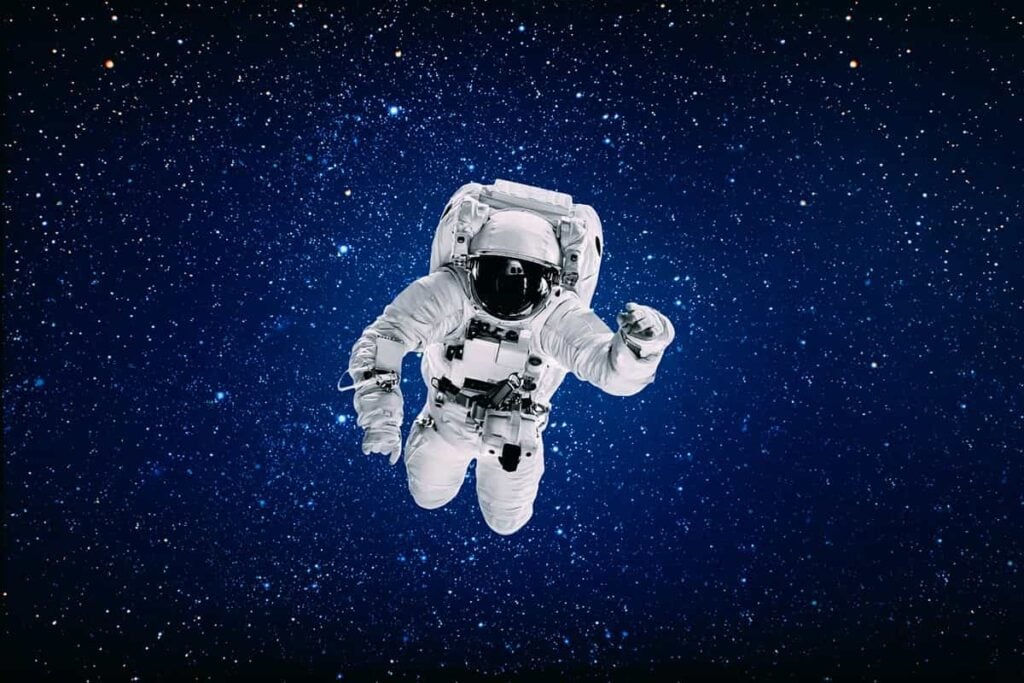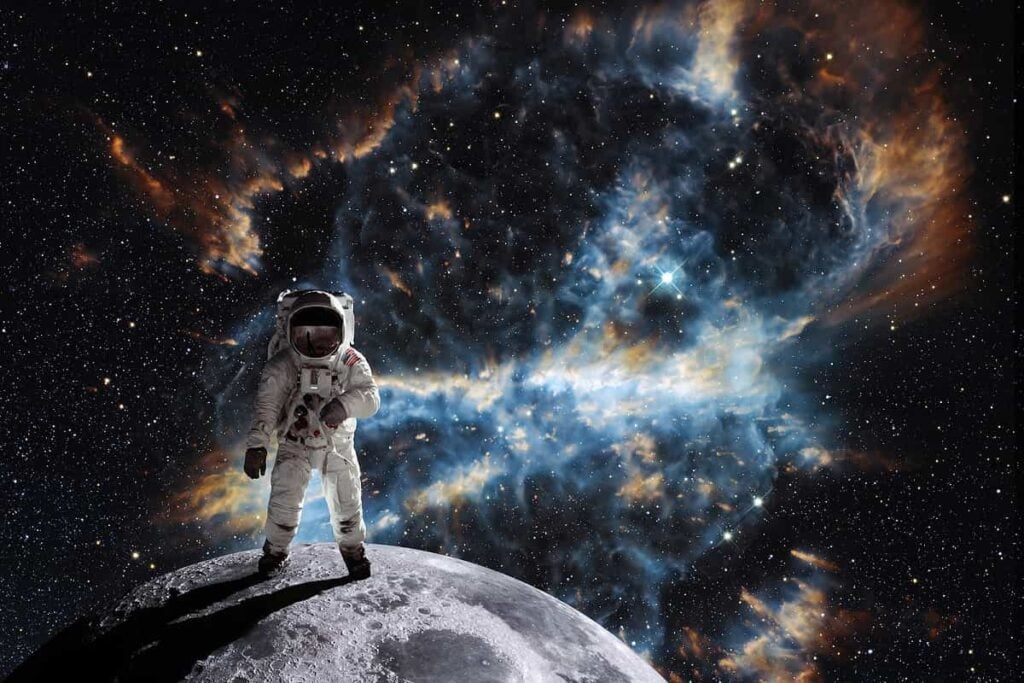Using Satellite Imagery Data to Generate Alpha
Table of contents

One important thing you learn during your MBA is that your newly acquired ability to conjure up value from nothing is referred to by the finance community as “the ability to generate alpha.” Loosely speaking, generating alpha means putting money into the markets and getting back more than if you would have simply invested in a broader market benchmark. Some finance theories like the efficient market hypothesis propose that the only way to generate alpha is by acquiring superior information because all commonly known information is already priced into the market.
Consequently, investors – particularly hedge funds – are always looking for new sources of information so they can generate super-sized returns. With an ever-increasing number of satellites in space now, there is loads of new imagery of the earth’s surface that can be mined for useful insights. One firm we’ve talked about before, RS Metrics, is Using Satellites to Forecast Metals and Commodity Prices in some very innovative ways.
The old “count the cars in the mall parking lot to forecast retail sales” use case is no longer unique. Anyone with some basic machine learning algorithms can now obtain satellite imagery and do the exact same thing. “The technology isn’t where the real value lies today,” said Maneesh Sagar, CEO and Chairman of RS Metrics, “it’s in having business-savvy data science teams that can extract a broader set of insights from the imagery.” We sat down with Mr. Sagar to discuss six interesting ways that his clients are using insights from satellite imagery data to generate alpha.
Camp Fire Disaster
We’ve talked before about how How Technology Will Affect Big Insurance Companies and gave examples of how satellite imagery can be used to assess things like hail damage. When something unexpected happens like a natural disaster, questions are immediately raised around who is liable and what they’re liable for. A large-scale disaster like a forest fire can destroy thousands of homes and insurance companies need to know – as quickly as possible – what they’re on the hook for.
Take for example the Camp Fire in 2018 which was California’s deadliest forest fire and one of the deadliest fires to ever traverse our planet affecting 18,265 parcels of land. Using satellite imagery, RS Metrics was able to then combine additional data sources such as property boundaries and county tax values to quickly assess the number of homes damaged and the extent of the damage.

This process allowed them to quickly tally up estimates of damages that could then be used to determine the extent to which insurance companies would be held liable. Oftentimes when a disaster like this one occurs, publicly-traded insurance companies will be immediately penalized by the market – across the board – allowing for savvy traders to purchase companies that were marginally affected at discounted prices. The same holds true in our next example which also relates to a fire.
Supply Chain Disruptions
Computing is so widespread that computing components like DRAM are now a commodity. This means that the prices of DRAM can fluctuate dramatically based on the forces of supply and demand. When the world’s second-largest manufacturer of DRAM – Korea’s SK Hynix (000660:KS) – had a fire in their factory on September 4th, 2013, the price of a benchmark DRAM chip rose from $1.60 to $2.27. This means that other DRAM producers stand to benefit (prices of stocks rise) while Hynix stands to lose (price of stock falls).
For traders, it’s critical to understand how long it takes for Hynix to come back online so that the prices of DRAM fall back to normal. Using satellite imagery, RS Metrics was able to assess the fire damage and monitor the progress of rebuilding the damaged buildings by looking at things like building cranes, waste disposal, and the number of cars in the parking lot which reflected people going back to work.

When assessing fire damage, it’s easier to do for a company like RS Metrics that’s been analyzing satellite imagery for the past ten years. They’re able to take images like the one above and then zoom in at various points in order to better understand what they’re looking at, compare it to benchmarks using historical data, and then cross-check it with ground intelligence. The speed at which they can reach conclusions is a key competitive advantage. In some cases, companies will reach out to RS Metrics asking for custom analysis following unexpected events.
When Trains Derail
While Rio Tinto has turned to robotic trains to transport ore, some companies still use humans. Some of those problem-prone humans were driving a BHP Billiton train carrying 268 wagons full of iron ore on Nov 5th, 2018 when it derailed causing damages that were estimated to take a week to clean up. A competitor of BHP contacted RS Metrics to provide a quote for satellite services to monitor the impact to iron ore stockpiles at the port and verify the status of repair operations at the accident site. Evaluating all available satellite, aerial, and drone platforms, RS Metrics was able to deliver near daily updates over the next 14 days providing the client with stockpile measurements and verification of the resumption of train operations.

The client was able to better anticipate the iron ore market impact and demand as a direct result of the project. While we’re on the topic of unexpected disasters in mining, let’s move to talking about the Vale fiasco.
The Vale Disaster
Vale Mining Company (VALE) is the largest producer of iron ore and nickel in the world, and when their Brumadinho damn in Brazil broke it caused lots of havoc making headlines around the world. The terrifying video of the dam bursting gives you some idea of just how bad the disaster was which took place around noon on Friday when many employees were having lunch in the company’s cafeteria. Close to 250 people were killed which probably didn’t raise any eyebrows at the C-level until the following Monday when Vale’s stock crashed 25% leading to the biggest single-day loss in the history of the Brazilian stock market.
Over the weekend when the market was closed, it would have been quite useful to look at satellite imagery to assess the damage. Even if the company was able to assess the damage in 48 hours, what’s the likelihood this $71 billion mining company would come clean to investors about the extent of the damage? That’s where satellite imagery from RS Metrics could have been quickly used to analyze the extent of the damages, immediately identifying the cafeteria as completely buried and perhaps even pointing rescue workers to where their efforts would be better spent searching for signs of life.

It makes a pretty compelling case for companies like Rio or Vale to invest in a firm like RS Metrics and use their analytical capabilities to minimize impact, recover from disasters sooner, and save some face with investors.
In addition to assessing damages on the ground, RS Metrics was able to capture the impact of the disaster on metal inventories as seen in the below chart.
In the above chart, we can see inventories are relatively flat through February until the mine was temporarily forced to close. At this point, buyers were forced to source alternative suppliers and started building up inventories on their end, so inventories at producers dropped in March. Producers moved to increase output in response, so inventories show a slight increase in April. However, as buyers/suppliers established new supply chains by May, we see inventories come down and stabilize. It’s incredible to think that these insights were all obtained by using pictures taken from space.
ESG and Satellite Imagery
We’ve often wondered whether or not sustainable investing generates alpha which prompted us to ask the question, Does Socially Responsible Investing (SRI) Outperform? In some cases it may not, but in all cases we ought to hold firms accountable for the impact they have on the environment. Historically, we’ve relied on self-reporting or third-party entities to let us know just how well firms are behaving, but there may be another way. RS Metrics has developed their own Environmental, Social and Governance (ESG) product which can be used to visually observe the impact of a firm’s mistakes – the Vale mining accident being a good example of that.

The way ESG companies work today is completely reactive and relies lots on self-reporting. Satellite imagery reflects a ground truth that’s proactive, real-time, and speaks for itself. Carbon emissions, the number of smelters a company operates, water usage, mining tailings, all of these represent ESG factors that can be measured using satellite imagery. RS Metrics is presently speaking with various ESG providers who see this as a game-changing way to approach ESG in an objective manner. Speaking of ESG, another use case for satellite imagery is to forecast when solar production comes online.
Solar Use Case
One common objection to using solar as a viable source of renewable energy is the land footprint that’s required. This means that any large-scale solar project can easily be monitored from space to determine how things are progressing. It’s a great way to see just how credible those status emails from your project managers are. Some things you might look at include:
- Clearing the land – Are there any earth moving machines around yet? Does the land appear to be graded?
- Assembling the equipment – How many semi-trucks are arriving with equipment?
- Installing the equipment – Are the frameworks laid out yet which the panels will then be affixed to?
- Monitoring Labor Resources – How many workers are there? How long are they taking for smoke breaks and what exactly are they smoking?
- Equipment coming online – How many solar panels can you see pointing toward the sky in a manner that implies they’re completely assembled?
What you can then do is aggregate this information across the globe to produce a handy tracking chart such as the one seen below:

Conclusion
If you’re looking for new information sources to generate alpha with, satellite imagery is one form of alternative data that can be used along with many other types that we’ve discussed before. In all cases, it’s not just about having the data but then adding metadata – data that describes data – so that we can derive insights that give us an information advantage. The speed at which we can retrieve these insights will depend on the quality of the data scientists who are analyzing the data. Anyone who works in a hedge fund knows that this is not some new concept. While the methods of retrieving alternative data become more sophisticated, the real value still lies in MBAs who copy and paste insights from the data scientists and forward them on to the traders who can then generate some delicious alpha.
Sign up to our newsletter to get more of our great research delivered straight to your inbox!
Nanalyze Weekly includes useful insights written by our team of underpaid MBAs, research on new disruptive technology stocks flying under the radar, and summaries of our recent research. Always 100% free.
















RS Metrics now offers the ability to track the impact of #Covid19 https://learn.rsmetrics.com/metalsignals/coronavirus/market/impact/covid19
Very slick.